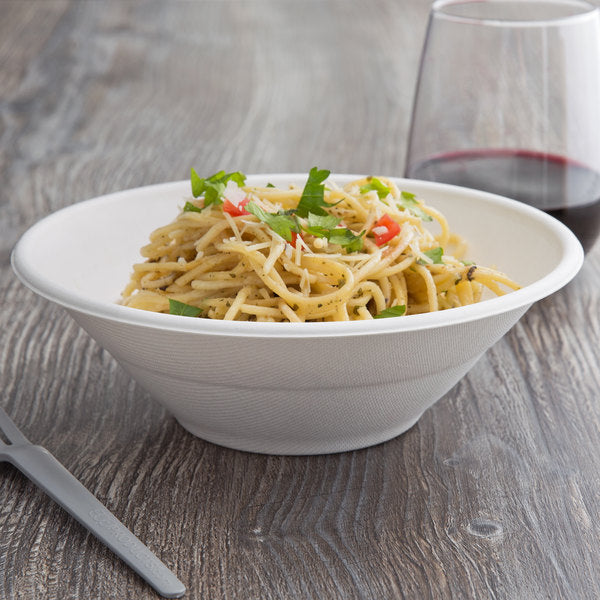Wine is more than a drink, it’s an experience, a story of land, craftsmanship, and time captured in every sip. For wine enthusiasts, understanding wine flavors is like learning a new language. Each aroma and note reveals something about where the grapes were grown, how they were fermented, and how the winemaker brought them to life.
In this guide, we’ll uncover what defines wine flavors, the science behind their creation, and how you can train your palate to appreciate the beautiful complexity in every glass.
- Top Winter Fruits for Your Restaurant Menu
- Wine Tasting: A Complete Guide for Beginners and Enthusiasts
- How to Pair Sweet Wine with Cheese
What Are Wine Flavors?
The Grape's Influence: Varietal Characteristics
The primary component that defines a wine's flavor is the grape from which it is made. Each grape variety possesses distinct characteristics that contribute to the overall profile of the wine. For example, Cabernet Sauvignon is known for its bold, dark fruit flavors and high tannin structure, while Pinot Noir typically showcases lighter fruit notes and a more delicate texture. Understanding these varietal characteristics is crucial for both wine enthusiasts and novices alike, as they set the foundation for the wine's flavor journey.
Related reading: Grape Varieties: A Comprehensive Guide for Wine Lovers and Beginners
The Winemaker's Touch: Impact of Winemaking Techniques
Winemaking techniques play a significant role in shaping the final flavor of wine. Decisions made during the fermentation process, such as the type of yeast used, fermentation temperature, and duration, all can lead to variations in flavor and aroma. Techniques like malolactic fermentation can soften a wine's acidity and introduce creamy notes, especially in white wines like Chardonnay. Moreover, the choice to age wine in oak barrels versus stainless steel can impart unique flavors oak barrels may contribute vanilla and spice notes, while stainless steel preserves the wine's original fruit character.
Terroir's Unique Fingerprint: How Location Shapes Flavor
Terroir refers to the unique combination of factors such as soil, climate, and geography that influence a grape's growth. It is a significant element in determining the flavor profile of wines from different regions. For instance, vineyards located in cooler climates may produce grapes with higher acidity and more herbal notes, while those in warmer areas might yield riper, fruitier wines. The concept of terroir also encompasses the minerality of the soil, lending a distinctive quality that can be sensed in the wine.
Explore next: Famous Wine-Producing Regions of the World

Decoding the Flavor Wheel: Common Wine Flavor Categories
Fruity Flavors: A Burst of Red, Black, and Stone Fruits
Fruits are often the first flavors you’ll notice:
- Red wines: Cherry, raspberry, plum, or blackberry.
- White wines: Apple, peach, lemon, or tropical fruit.
Example: A Pinot Noir often bursts with bright red fruit, while Syrah delivers deeper plum and black pepper notes.
Citrus and Tropical Notes: The Spark of White Wines
Zesty citrus and lush tropical tones bring freshness and vibrancy. Sauvignon Blanc and Riesling commonly express lime, grapefruit, or pineapple perfect companions for seafood or summer dishes.
Floral Aromas: Adding Elegance and Complexity
Floral aromas bring an added layer of sophistication to many wines, especially whites and lighter reds. Common notes such as honeysuckle, jasmine, and elderflower can create a perfume-like quality. Wines like Gewürztraminer are well-known for their strong floral scents, which can beautifully complement the fruit flavors present.
Herbal and Vegetal Notes: From Grassy to Peppery
In addition to fruity and floral notes, herbal and vegetal flavors add depth to certain wines. Sauvignon Blanc, for example, may carry grassy or herbal characteristics, while some red wines, like Cabernet Franc, can present peppery or green bell pepper notes. These flavors contribute to the complexity and intrigue of the wine's profile.
Spice & Toast: The Influence of Oak
Oak aging introduces inviting flavors like vanilla, cinnamon, or clove. Zinfandel and Shiraz often carry these rich, spicy undertones that make them perfect for fall evenings.
Earthy & Mineral Undertones: Nature’s Signature
Earthy notes forest floor, wet soil, or flint give wine depth and authenticity. Minerality, especially in wines from rocky soils like Chablis, creates a crisp, stony sensation that lingers beautifully.
Unexpected Flavors: Leather, Smoke, and Petrol
As wines age, they develop tertiary flavors complex, savory notes like tobacco, truffle, leather, or even petrol (as in mature Rieslings). These signals of evolution add mystery and sophistication to older bottles.
Related reading: Wine Serving Temperature Guide

Beyond the Basics: Exploring Less Common Wine Flavors
Petrol, Smoke, and Leather Notes
Some wines surprise us with rare flavors like petrol, smoke, and leather, often found in older or more traditionally crafted wines. These unusual flavors can evoke deeper stories and connections to the wine's origins.
When Unexpected Flavors Appear
For instance, Rieslings aged in specific regions may develop a curious petrol note that reflects their maturity. Such unexpected flavors often lead to intriguing discussions among wine lovers.
The Evolution of Flavor: Tertiary Notes in Aged Wines
As wines age, they evolve, and tertiary flavors begin to emerge. These may include dried fruit, nutty characteristics, and even some earthy elements, enhancing the complexity of the wine.
Unlocking Complex Tertiary Flavors (e.g., Dried Fruit)
For example, a well-aged Bordeaux might showcase secondary notes of dried fig or raisin, providing a luxurious and multifaceted tasting experience that deepens appreciation for aged wines.
Wine Regions - Exploring the World's Most Famous Wine-Producing Regions
Training Your Palate: Tips for Identifying Wine Flavors
Start with the Basics: Focus on Primary Aromas
When exploring the world of wine, understanding the primary aromas is essential. These are the basic scents that wine possesses, often categorized into fruit, floral, herbaceous, and mineral. Start your tasting journey by familiarizing yourself with common fruit notes, like blackberry in a red wine or citrus in whites.
- Fruity Flavors: Common primary aromas include apple, peach, berry, and citrus.
- Floral Notes: Look out for hints of rose and violet, especially in varietals like Gewürztraminer.
- Herbaceous Scents: Basil, mint, or grassy aromas can often be found in Sauvignon Blanc.
- Mineral Characteristics: Chalky or flinty notes give some wines a distinct touch, particularly in Chablis.
By identifying these basic aromas, you lay the groundwork for recognizing more complex flavors as you progress in your tasting skills.
The Power of Comparison: Tasting Wines Side-by-Side

One of the most effective methods for honing your palate is to taste different wines side-by-side. This practice allows you to see how subtle variations impact flavor and aroma.
- Choose Two Wines: Select two wines of similar varietals but from different regions or vintages. For instance, compare a Napa Valley Cabernet Sauvignon with one from Bordeaux.
- Take Notes: As you taste, jot down your observations regarding both wines’ aromas, flavors, and finish. There’s no right or wrong answer; it’s all about your personal experience.
- Discuss with Others: Share your findings with friends or at a tasting event to gain new insights.
This side-by-side tasting experience can deepen your appreciation for the nuances found in different wines.
Using the Right Vocabulary: Describing What You Taste
Having the right vocabulary enhances your ability to communicate your wine experience. Here are some helpful descriptors categorized into primary areas:
- Fruits: Consider both fresh and dried fruits, like cherry, plum, or fig.
- Spices: Note flavors like clove, vanilla, or black pepper.
- Textures: Terms like 'smooth', 'crisp', or 'velvety' help describe the mouthfeel of the wine.
- Finish: The aftertaste can leave a lasting impression, categorized as ‘long,’ ‘short,’ or ‘clean.’
Utilizing specific vocabulary not only helps in accurately describing flavors but also enriches discussions with fellow wine enthusiasts.
Practice Makes Perfect: Consistent Tasting and Exploration
As with any skill, the more you practice, the more adept you become. Regular wine tasting enhances your familiarity with various flavors.
- Join Tasting Groups: Participate in local wine tasting events or clubs to engage with others who share your interest.
- Explore Different Regions: Each wine region has unique characteristics due to varying climates and soil types, so try wines from various parts of the world.
- Record Your Sessions: Keep a wine journal where you can document your favorites, tasting notes, and personal reflections on each wine.
By consistently exploring and reflecting on different wines, you’ll continue to grow your palate and deepen your understanding of wine flavors.

The Subjectivity of Taste: Why Wine Flavor Perception Varies
Understanding that wine tasting is subjective is key to appreciating its complexities. Several factors contribute to why different individuals perceive flavors differently.
Individual Palate Sensitivity
Everyone’s palate is unique, influenced by genetic factors and personal experiences. Some individuals may be more sensitive to certain flavors or aromas, making them more pronounced, while others may not notice them at all.
The Role of Memory and Experience
Past experiences and memories significantly shape how we perceive flavors. A specific wine might evoke personal memories, affecting how you taste it.
- Associative Memories: For example, a tasting of a grapefruit-flavored wine might remind you of summer breakfasts spent outdoors, enhancing your overall enjoyment of the wine.
- Pairing With Food: Some flavors may be more or less pronounced depending on what you pair with the wine, affecting your tasting experience significantly.
Environmental Influences on Taste
Environmental factors also play a role in flavor perception. The setting in which you’re tasting can influence your experience.
- Ambient Noise: A quiet, serene environment allows for deeper focus on the subtleties of a wine.
- Temperature: Serving wine at the right temperature enhances its flavors. Reds are generally better at room temperature, while whites often shine when chilled.
By recognizing these factors, you can approach wine tasting with a deeper understanding of your own reactions and perceptions.
FAQs about Wine Flavors
What are the most common flavors found in red wine?
Common flavors in red wines include dark fruits like blackberry, cherry, and plum. Additional notes may include spices like black pepper, and earthy tones such as leather or tobacco.
How can I improve my ability to taste different wine flavors?
Improving your tasting ability requires consistent practice, mindful tasting, and the exploration of diverse wine styles. Keeping a wine journal and participating in tastings can also enhance your skills.
What does it mean when a wine has "earthy" flavors?
When wine is described as having "earthy" flavors, it typically refers to tastes reminiscent of wet soil, mushrooms, or forest floor, often found in old world wines or those with unique terroirs.
Are certain flavors always indicative of a specific type of wine?
While many flavors can be typical for certain varietals, there’s always room for variation based on factors like region, winemaking techniques, and vintage. It’s important to approach wine with an open mind and a willingness to discover new experiences.
Conclusion
Exploring the flavors of wine is a personal journey filled with discovery and enjoyment. Being patient and open-minded as you train your palate will enhance your experiences. Keep tasting, keep learning, and most importantly, savor every moment of your wine adventure.







